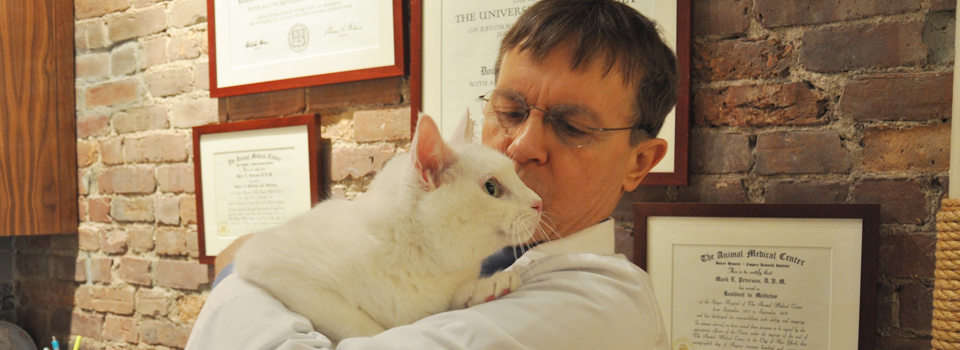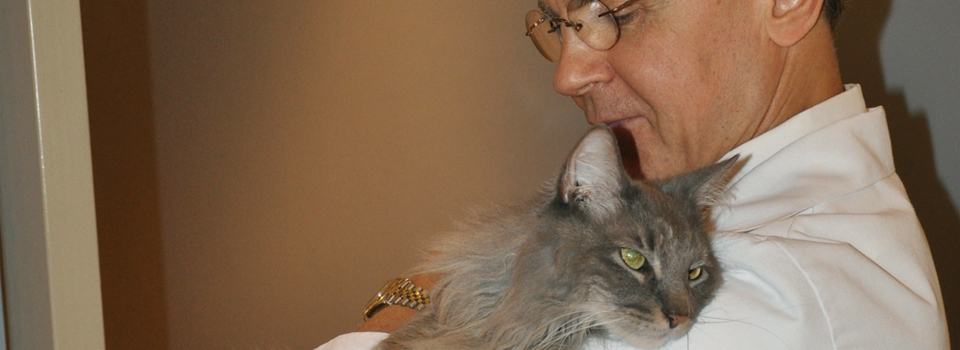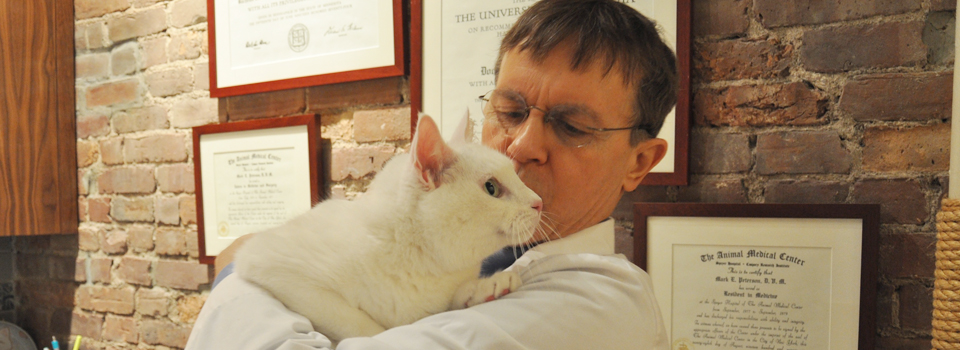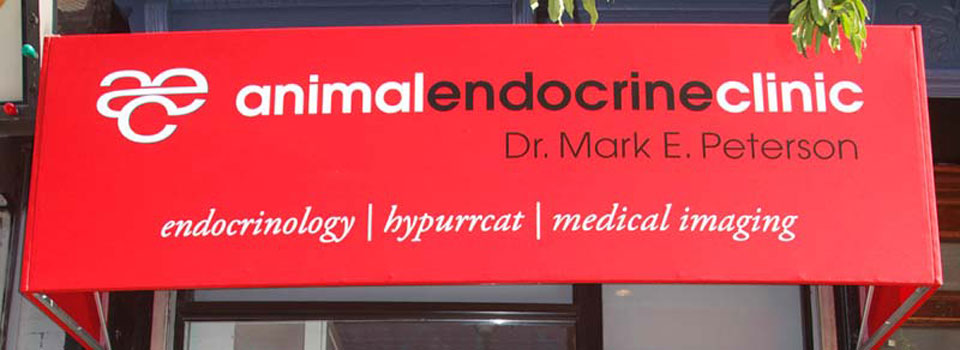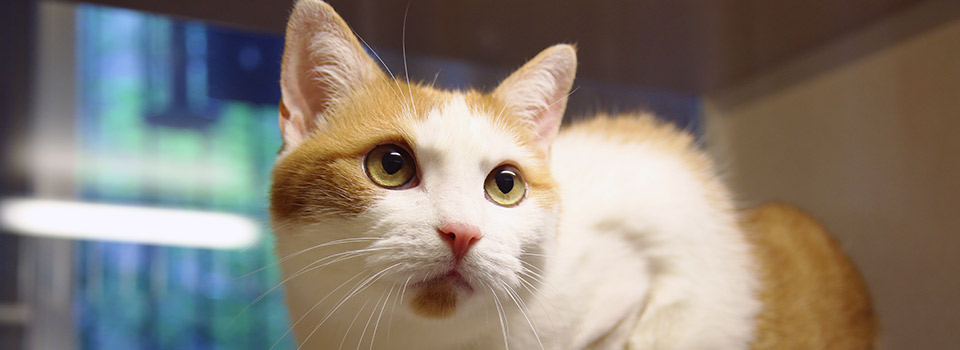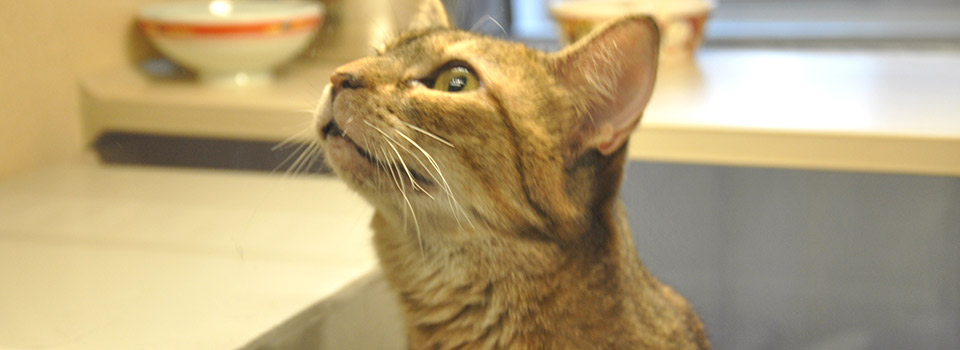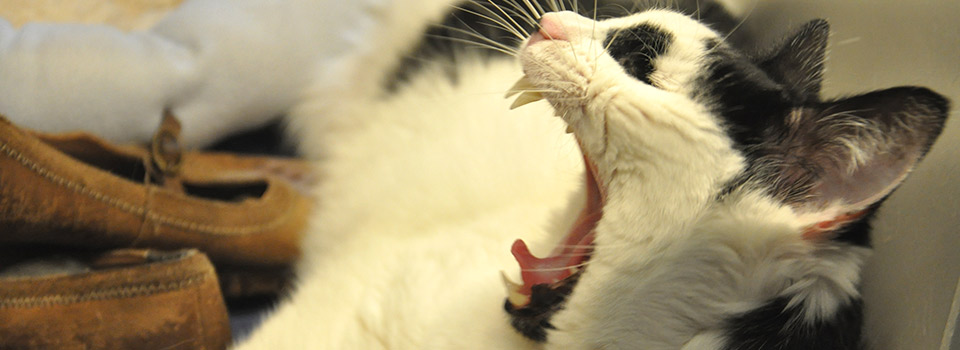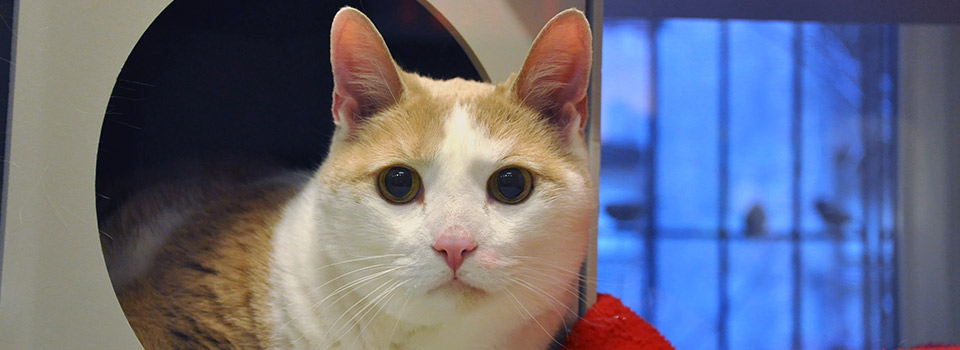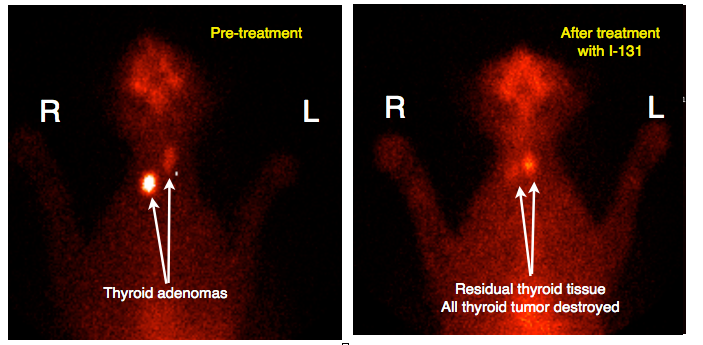Clinical Research at the Animal Endocrine Clinic
At the Animal Endocrine Clinic, Dr. Peterson conducts clinical research studies in order to find safer or more effective methods to better prevent, detect, or treat a variety of endocrine diseases. By clinical research, we are referring to research that involves the study of spontaneous disease among client-owned cats and dogs with hormonal disease. In other words, Dr. Peterson does not induce disease in any animal in his pursuit of knowledge. To view or download Dr. Peterson’s research publications, visit his profile on ResearchGate.
For further information about the studies listed below, please contact our Clinical Research Coordinator, at info@animalendocrine.com.
Current Clinical Studies:
Evaluation of an individualized radioiodine dosing protocol for treatment of cats with hyperthyroidism
Ideally, treatment of a hyperthyroid cat with a single dose of radioiodine restores euthyroidism without inducing hypothyroidism. In other words, the goal of treatment should be to irradiate and destroy all abnormal thyroid tissue (adenomatous or carcinomatous) but to leave the normal (nonadenomatous) thyroid tissue intact. If too much of the normal thyroid tissue is destroyed, hypothyroidism (underactive thyroid) will result.
It is now clear that most dosing protocols currently used will result in a high rate of hypothyroidism. Unfortunately, this can easily go undiagnosed, since most cats fail to show overt clinical signs of an underactive thyroid condition.
The goal of this study is to determine if an individualized dosing regime will help to lower the rate of hypothyroidism that can occur after treatment of hyperthyroidism with I-131.
To that end, we will investigate the usefulness of a dosing algorithm, which takes into consideration the size of thyroid tumor and the pretreatment serum thyroid hormone concentrations. In addition, quantitative thyroid imaging will be used to better estimate the volume of the thyroid tumor tissue, and overall functional metabolic activity of thyroid tumor is estimated by calculating the percent uptake of the pertechnetate (the radionuclide injected in order to do the thyroid scan).
All cats treated with radioiodine at our Hypurrcat facilities (at the Animal Endocrine Clinic) will be automatically entered into this study.
–
Evaluation of the prevalence of subclinical bacteriuria (occult urinary tract infection) in hyperthyroid cats
Co-investigators: Peter Soberoff, DVM, New York Cat Hospital, New York City
Some investigators have reported that hyperthyroid cats are susceptible to urinary tract infections, which may be subclinical and go undetected. This could contribute the development of chronic kidney disease, a common problem in older cats.
This study will investigate the prevalence of occult or subclinical bacteriuria in untreated hyperthyroid cats, and compare the rate of such urinary tract infections to the rate in age-matched cats without hyperthyroidism. To do this, we collect a sterile urine sample for culture at the time of admission, prior to treatment with radioiodine. Clinically normal cats that present for routine checkup will also have urine sterilely collected for urine culture in an identical manner.
All cats treated with radioiodine at our Hypurrcat facilities (at the Animal Endocrine Clinic) will be automatically entered into this study.
–
Evaluation of the prevalence of hypertension (high blood pressure) in hyperthyroid cats, before and after successful treatment with radioiodine
Co-investigator: Dr. Pilar Xifra, Iodocat, Madrid, Spain
Hyperthyroidism appears to be a relatively common cause of hypertension in cats. Most studies estimate that only 10-25% of untreated hyperthyroid cats have systemic hypertension. The high blood pressure in many of these hyperthyroid cats will resolve with treatment of the hyperthyroid state.
However, approximately 25% of cats (many with normal blood pressures at time of diagnosis of hyperthyroidism) will go on to develop systemic hypertension after successful treatment of hyperthyroidism. The cause and pathophysiology of hypertension associated with hyperthyroidism (either before or after treatment) remains poorly understood.
The goal of this study is to determine the prevalence of hypertension in cats with untreated hyperthyroidism, as well as to investigate the effect of curing the cats with radioiodine on their blood pressure reading. To this end, we will measure blood pressure in all hyperthyroid cats before and 6 months after successful treatment, when the cats are euthyroid.
All cats treated with radioiodine at our Hypurrcat facilities (at the Animal Endocrine Clinic) will be automatically entered into this study.
–
Monitoring the effects of radioiodine treatment with a complete thyroid panel (T4, T3, Free T4, TSH)
Note that enrollment of new hyperthyroid cats into this study is closed.
This study investigates the use of a complete thyroid panel of tests (serum T4, T3, free T4, and TSH) to monitor the cats after radioiodine treatment. All cats treated with radioiodine at the Animal Endocrine Clinic are eligible for this study.
The goal of this study is to determine if measuring a complete panel of four thyroid hormones will be better at detecting mild degrees of thyroid dysfunction in cats that have been treated with radioiodine (I-131). This includes looking for both persistent hyperthyroidism and mild hypothyroidism (an underactive thyroid condition that can develop if too little normal thyroid tissue remains after treatment).
–
Use of a complete thyroid panel (T4, T3, Free T4, TSH) as an aid in diagnosing iatrogenic hypothyroidism in cats
This study investigates the usefulness of a complete thyroid panel of 4 tests to help diagnose hypothyroidism (an underactive thyroid condition) that can develop in hyperthyroid cats after radioiodine treatment.
We anticipate that use of a complete thyroid panel of 4 tests (serum T4, T3, free T4, and TSH) will increase our ability to properly and accurately diagnose hypothyroidism in cats. This diagnosis, however, will be confirmed by thyroid imaging (thyroid scintigraphy), considered the “gold standard” diagnostic technique for thyroid dysfunction.
–
Evaluation of the effects of radioiodine treatment on destruction of the hyperthyroid cat’s thyroid tumor with follow-up thyroid scintigraphy
This study investigates the true effectiveness of radioiodine treatment on destruction of the thyroid tumors that all hyperthyroid cats have as the underlying cause of their thyroid disease. At the Animal Endocrine Clinic, we already use thyroid scintigraphy (thyroid scans) to determine the size of each cat’s thyroid tumor. The purpose of this study is to determine if the thyroid tumors are completely destroyed when re-evaluated 3-6 months after treatment.
–
Effect of non-thyroidal illness on thyroid stimulating hormone and free thyroxine concentrations by chemiluminescent immunoassays in cats
Co-investigators: Danielle Davignon, DVM; John F. Randolph, DVM, Dipl ACVIM; and Janet M. Scarlett, DVM, PhD, Cornell University Hospital for Animals, College of Veterinary Medicine, Cornell University, Ithaca, New York.
This study will investigate the effect that non-thyroidal illness has on serum thyroid hormone concentrations (including T4, T3, free T4) as well as pituitary thyroid stimulating hormone (TSH). As far as the free T4 assay is concerned, we know that the standard free T4 assay (FT4 by dialysis) can give us high (false positive) results in sick cats. Recently, some labs have changed assay methods and now do their free T4 assay by a chemiluminescent methodology (Immulite). However, no one has looked at how nonthyroidal illness affects those free T4 results. So one of our purposes will be to compare the FT4 results done by the 2 methods to see which is better in cats suffering from nonthyroidal disease.
–
Investigation of intestinal and exocrine pancreatic function amd fecal microbiota in hyperthyroid cats before and after radioiodine treatment
Co-investigator: David A. Williams MA VetMB, PhD, Dipl ACVM and ECVIM-CA, University of Illinois
Gastrointestinal issues (vomiting, diarrhea, soft or voluminous stools) are not uncommon in hyperthyroid cats. This study investigates the effect of feline hyperthyroidism on both intestinal and pancreatic function, and also evaluates the GI microbiota changes associated with successful treatment and restoration of normal thyroid function. To that end, we will evaluate intestinal and pancreatic function by measuring serum cobalamin, folate, and pancreatic lipase immunoreactivity (fPLI), and we will evaluate stool to determine levels of fecal alpha1-proteinase inhibitor and calprotectin. Finally, we will evaluate the fecal microbiota and metabolomics in sera both before and after treatment.
–
Ultrasound evaluation of muscle condition in cats with hyperthyroidism
Co-investigator: Dr. Pilar Xifra, Iodocat, Madrid, Spain
We recently reported that cats with hyperthyroidism commonly develop muscle wasting, which appears to be at least partially reversible after successful treatment of the cats’ hyperthyroidism. The degree of muscle wasting can be evaluated by visualization and palpation of the spine, scapulae, skull, and wings of the ilia and classified as mild, moderate, or severe using the World Small Animal Veterinary Association (WSAVA) Muscle Condition Score chart.
This muscle condition score (MCS) is useful for clinical use in cats because it is quick and easy to perform. However, it may not be precise enough as an outcome measure for research studies where quantification of muscle mass over time is needed, especially if the changes are small.
Ultrasonography of muscle has been used to assess muscle loss in humans with varying degrees of muscle wasting (cachexia and sarcopenia). This ultrasonographic technique has not been validated in cats with loss of muscle mass.
The goal of this study are to assess the changes of muscle mass in hyperthyroid cats before and after treatment using both the clinical MSC and ultrasonographic measurement of muscle.
–
Biological variation of serum thyroid hormones and TSH concentrations in clinically healthy cats
Co-investigators: Jennifer Prieto, DVM; Patrick Carney, DVM, Dipl ACVIM; Meredith Miller, DVM, Dipl ACVIM; Mark Rishniw, DVM, Dipl ACVIM; John F. Randolph, DVM, Dipl ACVIM; and Ned Place, MD. Cornell University Hospital for Animals, College of Veterinary Medicine, Cornell University, Ithaca, New York.
Thyroid disease is common in cats, but little is known about the biologic variability of serum thyroid hormone concentrations and its impact on diagnostic utility in either healthy cats or cats with thyroid disease.
In healthy human individuals, serum thyroid hormone and TSH concentrations can show rather marked inter-individual biological variation, but much less intra-individual variability. This can complicate diagnosis, especially in early or subclinical thyroid disease when borderline high or low serum thyroid concentrations would be expected. We suspect that the same biologic variability is present in cats.
The purpose of this study is to determine the biological variation, index of individuality, and reference change values for thyroid hormones and thyroid-stimulating hormone (TSH) in clinically healthy cats.
These study cats will be recruited from a population of pet cats owned by faculty, staff, and students of the Cornell University Hospital for Animals.
For more information about our Clinical Research Studies, please contact Dr. Peterson at the following email address: info@animalendocrine.com.


